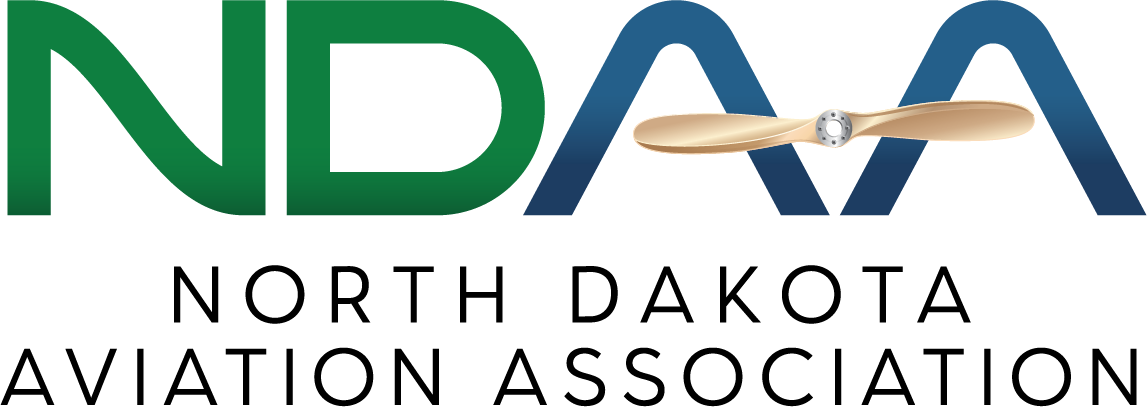
Carol on wing of the Piper Archer II at a fuel stop enroute to Florida, October 1976. The brown bag was full of Twizzlers.
By Rob Spiekermeier
Carol and I were married Saturday evening, October 16, 1976, at St. Patricks’ Church in Enderlin, ND. On Sunday, we drove to Valley City Municipal Airport in light snow flurries and cold. On the ramp was a nearly-new Piper Archer II Airplane that Larry Lindemann had serviced and fueled earlier that morning. With it, he had left a note wishing us a safe and fun trip. I did my pre-flight, checked fuel and oil as Carol secured our baggage. I called Flight Service and checked weather and winds aloft enroute. Earlier that year, I had earned my commercial license on Carol’s birthday, March 17. I had considerable time in this aircraft. It was fully equipped for IFR flight, we were ready to go!
We blew out of there down 3-1 into light snow and wind, it was 24 degrees. We turned southeast climbing steadily and flew out of the snow into clear skies before we grazed the edge of South Dakota. I leveled and stabilized the craft at 9,500 feet and engaged the autopilot. This plane had a full panel and the latest avionics of the era. As I recall, it had two quality Nav-Com radios, Automatic Direction Finding (ADF), digital Distance Measuring Equipment (DME), a transponder, an Emergency Locator Transmitter (ELT), and a good Exhaust Gas Temperature (EGT) display. It was a comfortable, quiet, dependable aircraft. I only wished it had retractable wheels.
I was busy dialing in VOR stations, trimming the plane, leaning the mixture, and we had a nice tailwind at 9,500 feet. I had all the avionics humming and autopilot engaged, when Carol asked if I would mind if she took a little nap? “Sure,” I said, thinking about her big day yesterday. She folded her arms, leaned against the window, and fell asleep. Carol was a beautiful young woman with long dark brown hair that fell below her shoulders and eyes you could drown in. One of her special qualities was that she slept beautifully; her face was relaxed and peaceful, she was stunning!
That’s when it happened; I looked over at her, the brilliant afternoon sun reflected off the wing, diffused slightly through the plexiglass, sparkling through her long hair. The effect was a heavenly glow about her face. Her beauty was overwhelming to me at that instant, she was my best friend, now my wife, and I loved her so much! I thanked God right then for where we were, for my blessings, and her.
Here I am 44 years later, and this memory is still as vivid as that day so long ago. Carol died on a clear sunny morning on February 25, 2020, in our home with me by her side. Although cancer had consumed her, she died in no pain and was at peace with God. The remarkable thing was her face was just like that day in the sky when she was 18 years old. She was even more beautiful now and I loved her so much more! This was surely God’s handiwork now as it was way back then.
I never told her or anyone else about this memory before; now, my grief has inspired me to honor her with this poem.
God’s Grace at 95 Hundred Feet
She was only eighteen years young, girl so sweet,
Wed on Saturday, Sunday in snow down 3-1 we sped.
Lifting gently, south towards Florida’s warmth we flew,
Climb mechanical bird, leveled at 95 hundred feet.
The Lycoming’s reliable drone, the rush of the air,
Pointers confirm our course steady and true.
New young couple very at ease in God’s domain,
My glance caught her asleep, with nary a care!
Air so clean, that only a pilot can see,
Brilliant west sun, glistening off the wing,
Sparkled through her lovely long dark hair,
God’s light revealed, that girl was the world to me!
Lord protect us from the many perils above,
Thank you God for the gift of flight.
Pilots do get just a little bit closer to thee,
Help me God, to give you and her my love!
Carol, flying with the angels.
All my love! Rob 8-1-2020
Dana (Paul) Lindemann (left), Carol (Rob) Spiekermeier (center), Dani (Jarrod) Lindemann (right) at the shop in Valley City a few years ago. Three women with time in the air!



